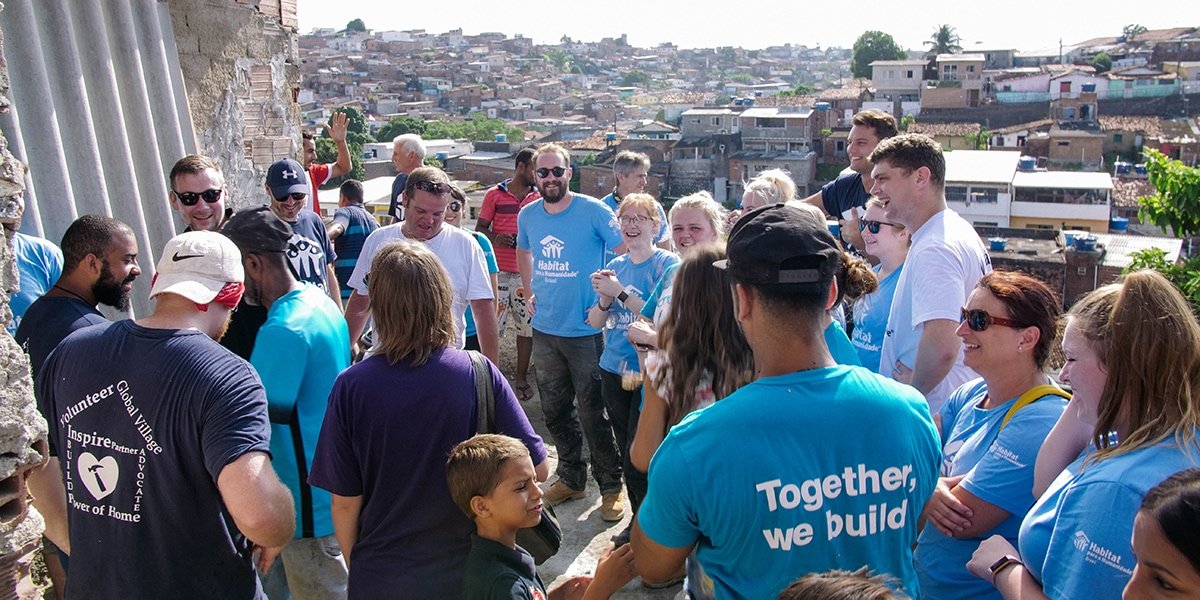

The hard work begins in Brazil
Last October, a group of international volunteers arrived in Recife, the sprawling capital of the North-East Region of Pernambuco, Brazil, to spend the next week renovating homes for 5 families in the Alto Santa Terezinha community. This favela was chosen by Habitat for Humanity because there are many families living in hazardous conditions, without the means of improving. The volunteers’ help would be vital to speed up the building process and ensure a safer and happier future for the 5 families.
After spending Sunday adjusting to the heat, getting to know each other and working through the orientation, the volunteer team headed to bed to feel rested and ready for the first day on site.
The journey to the favela
As Monday morning came around the volunteers piled onto the bus eager to get stuck in. The journey to the build site was certainly memorable; a long drive through the city, out of the modern urban landscape and into the cramped slum space. As the roads turned from tarmac to loose stones, it was bumpy and at times uncomfortable, but worth it for the views and the rewarding hard work ahead.
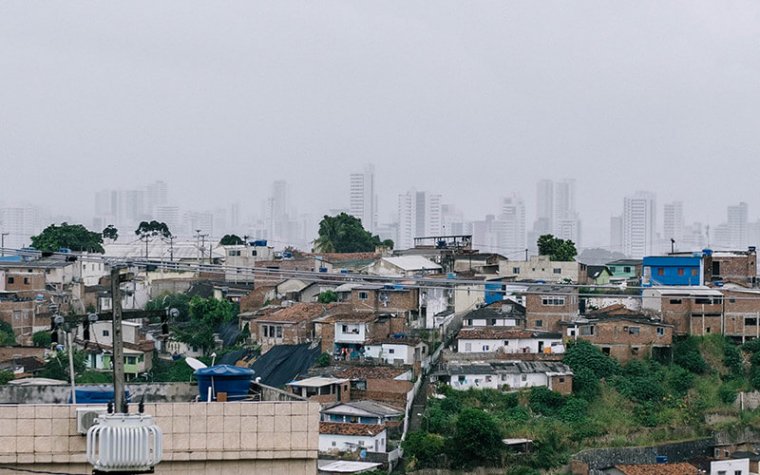
“I’d go anywhere that Habitat sent me, because it’s about the need, the people who need the housing built for them.” (Chris)
Upgrading favelas (slums) in Recife
Alto Santa Terezinha began as an informal settlement, founded by local workers and fishermen, who had been pushed out of the city by urban developers who wanted to profit from the city’s coastline. As more and more people moved there from the city, the area gradually became more established and the government eventually granted the residents the right to live there.
Since then, the area has grown into a large vibrant community, and the five families’ houses the volunteers would be working on were spread out around the east side.
Characterised by low income families, these 5 houses had been identified by Habitat for Humanity because they were extremely unsafe and unfit to live in. Since 2011, we have been working in the community (and inviting international volunteers to Brazil), doing what we can to renovate and upgrade unsafe homes and provide water and sanitation facilities to those who need them. It was clear that the conditions of the houses were eye opening for the volunteers:
“You live in your own little bubble at home, and you don’t really realise what’s going on.” (Kirsty)
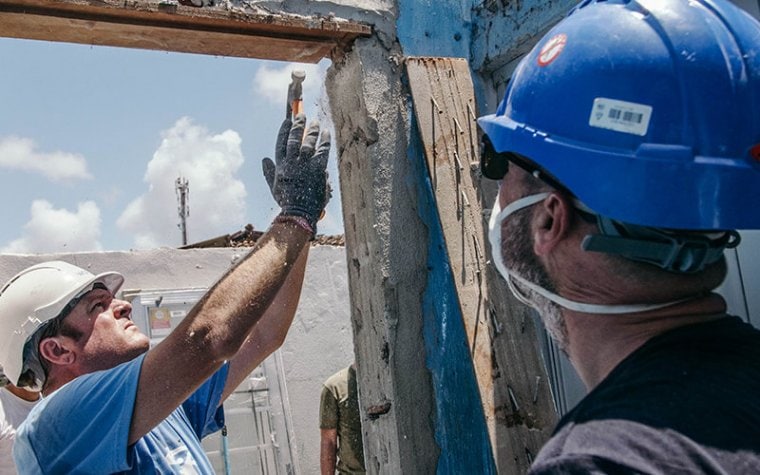
What volunteer work in Brazil looks like
Each house was chosen because it needed serious repair and renovation, because of this, the types of work the volunteers were doing varied from family to family.
One house, Alessandro’s, didn’t have a proper roof which meant the house flooded every time it rained, which is not unusal in Brazil, given the tropical climate and heavy rain fall for 2-3 months a year. The group of volunteers working on this house would be removing the old roof, preparing the structure for a new one and replacing it by the end of the week; giving Alessandro hope that he and his family could stay safe and dry during the next rainy season.
Fernando’s house didn’t have a floor, plastered walls or a proper kitchen. So volunteers working on his house spent a lot of time mixing cement, plastering and generally making his house a home, and a much improved place to live in.
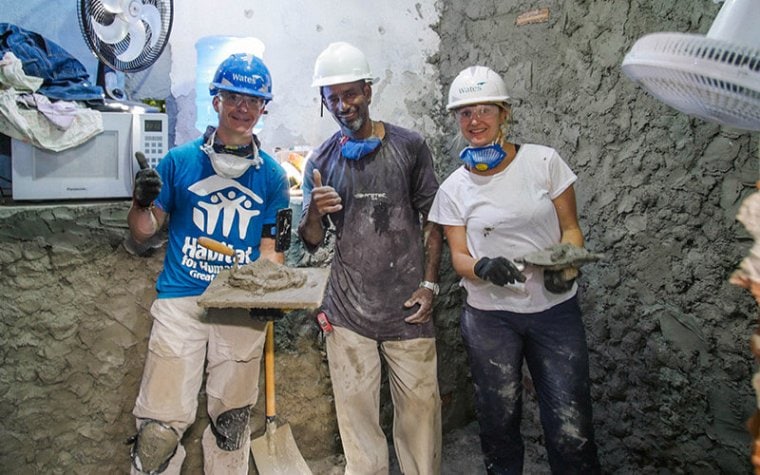
“What stuck with me is just how acute housing poverty can be, even when people have homes already. It’s not just renovation and repair that’s being done, it’s making just as much of a difference as building a house from scratch.” (Chris)
Building a safer future
One of the most unstable and dangerous houses was Joseane’s. Built at the top of a steep concrete slope with a 60 foot drop, she was forced to keep her children inside the house, but with no windows or form of natural light it was a dark and gloomy existence.
We had installed a fence and rail alongside of the house, giving her children the freedom to play outside. The volunteers fitted windows, and transparent roof tiles allowing maximum light in – all ensuring freedom for Joseane’s children, and a healthier future for the whole family.
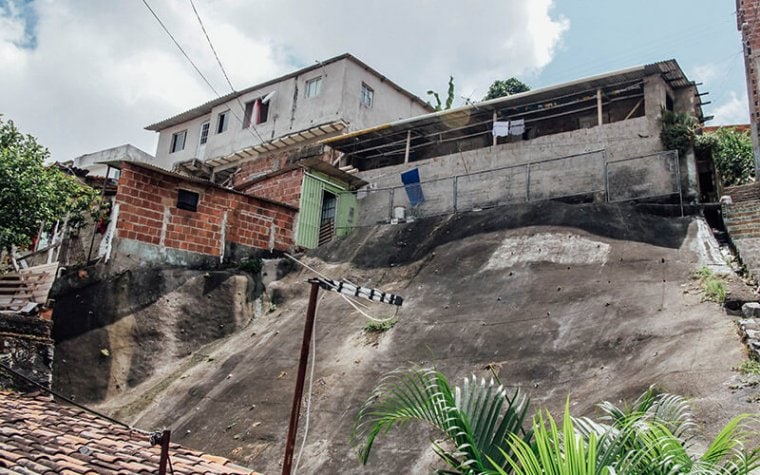
Michele and Sheila are sisters who live next door to each other and between them have several kids, grandparents and extended family, who were all living in a cramped space with no bathroom. The rest of the volunteers spent their time building a new room from scratch, which would be the bathroom, tiling floors, plastering walls. The difference they made in a week was incredible.
“Seeing Michele’s face, when she was peeking through the window of her house, and looking straight into her new bathroom. It was one of those moments where you don’t need to be able to speak the same language, I could tell exactly what was in her head… So I ran out and gave her a big hug!” (Ailsa)
Learning from the community
Mid-week, the team set aside their tools and hard-hats as they went to explore the local community centre. Whilst being shown around the centre, many of the volunteers said they felt overwhelmed and emotional. The centre is an incredible, government funded building that offers a range of activities like sports, arts, educational support, and there’s even a mental health clinic.
It would be easy to think that the centre is maintained by the government’s provisions. But despite this money, the centre is really upheld by the community. Every member of staff – cleaner, teacher, doctor lives in the favela, so they truly understand the need to respect the building and keep it going.
“I think that we have a lot of things at home, but actually the sense of community that they have here is immense.” (Joy)
The community centre is a safe haven for many of the children living in the favela, somewhere they can do their homework and be supervised, and not get in trouble on the streets. We were told that the crime rate has significantly decreased since the centre was built; that alongside Habitat for Humanity’s presence in the area, builds a more hopeful future for the residents.
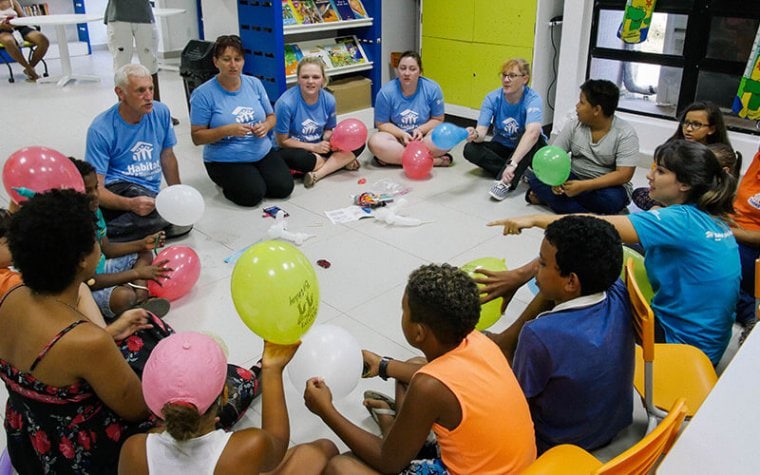
“There are some real life-lessons to take away from the people here. What they’ve built, when they had so little to start with is quite breath taking.” (Joy)
On the final day of the build, the afternoon was spent celebrating the handover ceremony, volunteers and families together. In fact, the whole community came out to celebrate. What struck the team the most was the unanimous sense of comradery and support.
There was no jealousy, or bitterness from the families who hadn’t had their homes renovated, only an overwhelming feeling of pride and hope that one day they could also receive help from Habitat for Humanity.
*Feeling inspired? Come volunteer in Brazil with us in 2019!
This post was written by Heidi Hunwick-Brown – our Digital Content Officer, who visited Alto Santa Terezinha alongside the volunteer team, to capture photos, videos and stories during the week.
This post was produced with the financial support of the European Union. Its contents are the sole responsibility of Habitat for Humanity GB and do not necessarily reflect the views of the European Union.

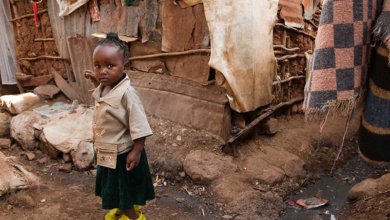
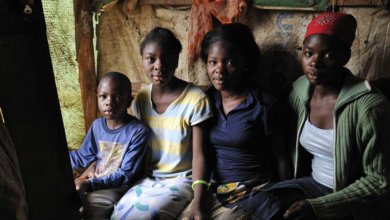
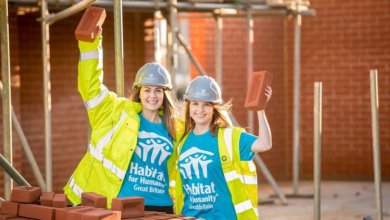
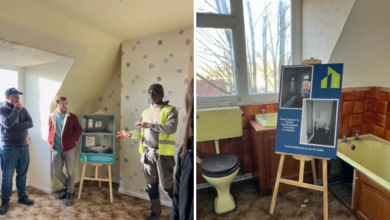
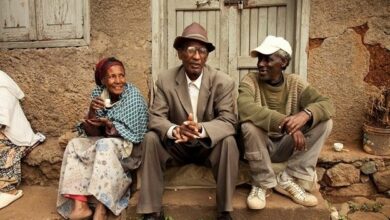
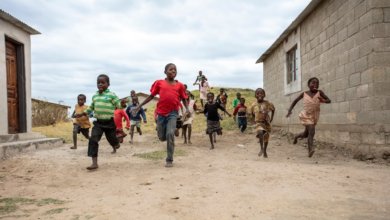
[…] *Este texto foi escrito por Heidi Hunwick-Brown – Diretora de Conteúdo Digital da Habitat For Humanity Great Britain , que visitou a Alto Santa Terezinha ao lado da equipe de voluntários, para capturar fotos, vídeos e histórias durante a semana. Leia a versão original em inglês. […]